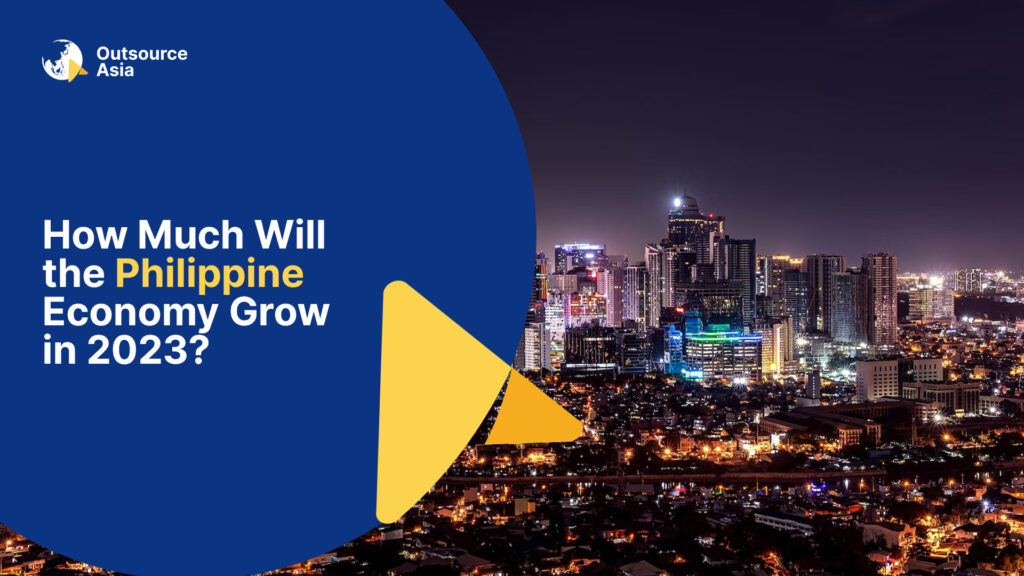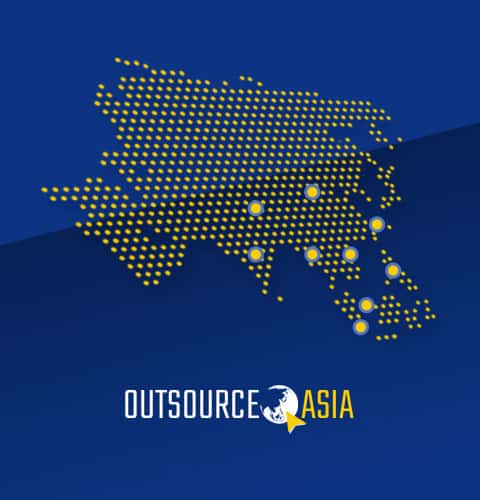
Philippines: Fastest Growing Emerging Market in the World
By 2033, the Philippines will have a trillion-dollar economy. This places the Southeast Asian archipelago amongst the fastest growing emerging markets in the world.
In 2022, the Philippines’ economy grew by 7.6%, the fastest rate since 1976. Philippine GDP measured in US Dollar nominal terms is expected to reach USD one trillion by 2033 with strong growth forecasts.
As a result, the Philippines will become one of the largest emerging markets in Asia-Pacific. Over the past two decades, average annual GDP per person has risen dramatically from below USD 1,000 in 2000 to USD 3,500 by 2022, and it is expected to exceed USD 6,000 by 2030.
According to the International Monetary Fund (IMF), the Philippines is forecast to grow 6.0% this year, but high inflation is a downside risk and should be addressed both fiscally and monetaryly.
In comparison to its previous forecast of 5.8%, the IMF projects the Philippines’ GDP to grow by 5.5% to 6.0% next year.
A continued tightening bias may be appropriate until inflation falls decisively within the 2-4 percent target range, according to a statement released by the Fund following a staff trip to Manila.
According to the IMF, this year’s growth will be at the low end of the government’s 6.0% to 7.0% growth target.
Its latest assessment follows the country’s stronger-than-expected first-quarter economic performance, which puts it on course to meet this year’s and next’s growth targets.
In spite of its slowest growth in two years, the Philippines was among Southeast Asia’s fastest in the first quarter.
“High core inflation, depreciation pressures amid tighter global conditions, geoeconomic fragmentation, and higher borrowing costs continue to pose the primary downside risks to the outlook,” the IMF said.
After inflation eased to 6.6% in April for the third straight month, the Bangko Sentral ng Pilipinas may pause its aggressive tightening cycle.
As macroeconomic policy tightens, fiscal consolidation complements monetary policy, the IMF said.
Philippine banking system liquidity and capital buffers are sufficient, and spillover effects from global banking turmoil have been limited, according to the IMF.
A tighter financial environment, however, requires close monitoring of the corporate sector.
Philippine Economy: One of the Fastest Growing in the World
As a result of the strong rebound from the COVID-19 pandemic during 2022, the Philippines economy grew at the fastest rate since 1976. The Philippines GDP growth rate of 7.6% was comparable to some of the world’s fastest growing large emerging markets in 2022, including oil-exporting nations such as Saudi Arabia and the United Arab Emirates, as well as rapidly growing Asian emerging economies such as Malaysia, Vietnam and India.
Despite widespread global disruptions to economic activity caused by the COVID-19 pandemic during 2020-21, the Philippines’ economic performance has also improved significantly over the past decade. From 2012 to 2019, real GDP growth in the Philippines ranged from 6% to 7% each year. With household final consumption expenditures increasing by 8.3% y/y and gross capital formation increasing by 16.8%, real economic growth in 2022 reached its highest level since 1976.
In March, the S&P Global Philippines Manufacturing PMI survey reading of 52.5 showed expansionary conditions, albeit slightly lower than the five-month high of 53.5 in January. For the seventh consecutive month, output grew. A strong upturn in new orders led to the uptick in production.
The performance of suppliers deteriorated further due to port congestion and material shortages. As a result of delivery delays, unfinished work also increased.
Broader inflation pressures remain a key concern for the near-term economy. As the headline CPI inflation rate moderated to 7.6% y/y in March from 8.6% y/y in February 2023, it still remains significantly above the Bangko Sentral ng Pilipinas (BSP) inflation target range of 2% to 4%.
During 2022, the BSP tightened monetary policy by 350bps. On 16 February 2023, the Monetary Board of the BSP decided to raise the interest rate on the overnight reverse repurchase facility by 50 basis points to 6.0 percent in response to continued high inflation pressures. The overnight reverse repurchase facility rate will rise by 25 basis points on 23 March 2023, reaching 6.25%. In 2023, average CPI inflation is projected to be above the upper end of the 2-4 percent target range at 6.0 percent, before returning to within target at 2.9 percent in 2024.
Debt-to-GDP Ratio Deteriorating
A moderate increase of 5.6% y/y was recorded in merchandise exports in 2022. In spite of the slowdown in mainland China, a key export market for the Philippines, the export sector remained resilient. While exports to mainland China declined by 5.1% y/y in 2022, exports to other key markets increased. Exports to the US were up 4.2% y/y, while exports to Singapore were up 17% y/y, and exports to South Korea were up 21.5% y/y.
Electronics exports, which account for around 56% of the total merchandise exports of the Philippines, have weakened during the second half of 2022 due to a slowdown in electronics demand in key export markets. Exports of electronics products declined by 13.9% y/y in December 2022, while semiconductor exports declined by 12.8%.
As a result of higher world oil and gas prices, imports have grown even faster, rising 17.3% y/y in 2022. Therefore, the trade deficit for 2022 rose to USD 58.3 billion, compared to USD 37.1 billion in 2021
The Philippines export sector is at risk in 2023 due to weak growth in the US and Western Europe. However, mainland China’s recovery is expected to mitigate these risks.
Due to the severe contraction of domestic demand, the current account surplus in 2020 reached a record high of USD 11.6 billion or 3.2% of GDP. As domestic demand and imports rose, the current account shifted back to a deficit of USD 5.9 billion, or 1.5% of GDP, in 2021.
For calendar year 2022, imports soared as world oil and gas prices surged, contributing to a further sharp deterioration in the current account balance. A growing trade deficit and rising oil prices caused the current account to be in deficit of USD 17.8 billion or 4.4% of GDP in 2022.
According to BSP data, external debt accounted for 26.8% of GDP in September 2022.
Overseas worker remittances, equal to around 10% of the Philippines’ GDP, have been a stabilizing force for the Philippines economy during 2020 despite COVID-19. Consumer spending in the Philippines is strongly influenced by remittances sent home by workers. Despite concern about job losses for workers abroad resulting from the effects of the pandemic on tourism and aviation, remittance data for 2021 continues to show resilient inflows. In 2021, workers abroad sent USD 34.9 billion in remittances, a record high. A total of USD 36.1 billion was remitted by foreign workers in 2022, an increase of 3.6% y/y.
The Philippines economy and total exports have also been boosted by rapid growth in the IT-BPO sector. IT-BPO exports will surpass USD 25.1 billion by 2021, according to BSP estimates. A total of USD 27.4 billion is estimated to be the total revenue from IT-BPO exports in 2022, an increase of 9.1 percent from 2021.
Economic Outlook for the Philippines
GDP growth for calendar 2021 rebounded to 5.6% y/y despite the COVID-19 Delta wave in the second half of 2021. With a growth rate of over 7.6% y/y in 2022, momentum has continued to be strong. The gradual easing of pandemic-related travel restrictions during 2022 has led to a gradual reopening of domestic and international tourism. Economic growth could be substantial in 2023 if this trend continues. The gross direct tourism value added as a share of GDP in 2019 was estimated at 12.7%, including both international and domestic tourism. According to estimates, international tourism expenditures totaled 549 billion pesos and domestic tourism expenditures totaled 3.1 trillion pesos. As domestic tourism contributes significantly to GDP, its recovery could be a significant growth driver in 2023.
It is expected that the economy will continue to grow strongly in 2023. S&P Global Philippines Manufacturing PMI survey results for March 2023 indicate expansionary conditions for manufacturing output and new orders. The continued inflow of remittances from overseas workers, the rapid growth of IT-BPO exports and the recovery of the tourism sector are also expected to support economic growth momentum during 2023.
IT-BPO headcount in the Philippines reached 1.57 million in 2022, with revenues growing to USD 32.5 billion, according to the IT and Business Process Association of the Philippines.
In the long run, the IT-BPO sector in the Philippines will continue to grow due to well-educated workers and English proficiency.
In 2023, GDP is expected to grow by 5.8% y/y, helped by sustained strong private consumption spending, an increase in government infrastructure spending and an improvement in remittances.
According to forecasts, the Philippines economy will grow rapidly, with GDP doubling from USD 400 billion in 2022 to USD 800 billion in 2030. Strong growth in urban household incomes will boost private consumption spending, a key growth driver.
Philippines is forecast to join mainland China, Japan, India, South Korea, Australia, Taiwan and Indonesia in this grouping of Asia-Pacific’s largest economies by 2033. The Philippines economy is also expected to grow rapidly, from USD 3,500 in 2022 to USD 6,200 by 2030. In addition, this will catalyze foreign and domestic investment into many sectors of the Philippine economy, supporting the growth of the Philippines domestic consumer market.
In addition to its membership in the recently implemented RCEP trade deal, the Philippines will also gain from its very favorable rules of origin, providing cumulative benefits that will lead to the development of manufacturing supply chains in the RCEP region. RCEP member nations will be able to attract foreign direct investment flows for a range of manufacturing and infrastructure projects, particularly into low-cost manufacturing hubs like the Philippines.
The Philippines economy looks very promising for the next decade, with significant progress expected to be made in economic development. In 2021, the Philippine government reported that approximately 18.1% of the population still lived below the poverty line, or 20 million people. Over the next decade, rapid growth in per capita GDP and standards of living should lead to a broad improvement in human development indicators and a significant reduction in extreme poverty.
In order to remain competitive, businesses must keep up with the fast-paced outsourcing industry. Your business will be affected by these trends both now and in the future.
What criteria do you employ to choose the perfect outsourcing partner? If you need help in finding the right outsourcing partner, book a FREE APPOINTMENT with Outsource Asia experts today.


